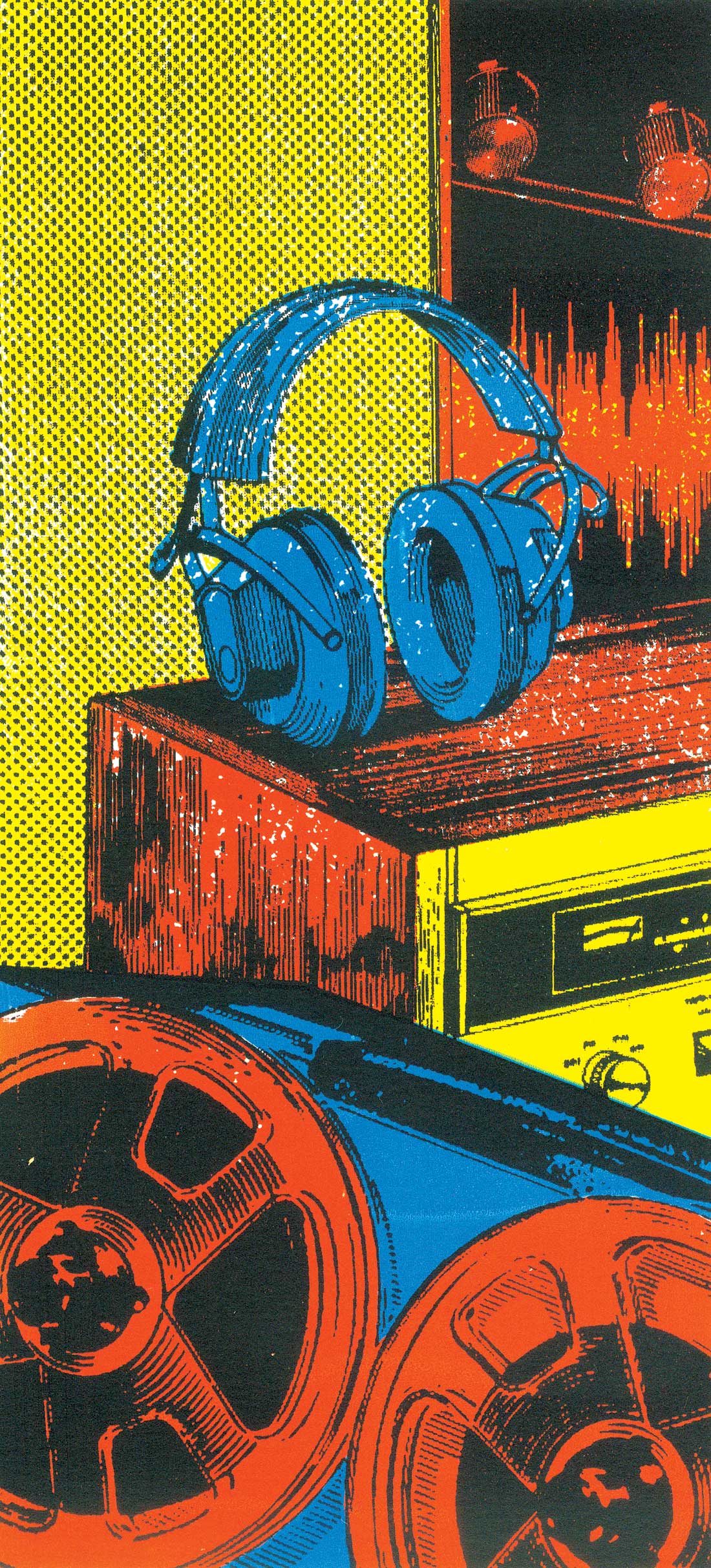The Josephson Engineering C700A doesn't look like any mic you've seen before, and that's a good thing because, psychologically, you'll be expecting something new, and I promise, you won't be disappointed. It's big like a vintage mic-physically and sonically. The extra size accommodates its unique two-capsule design: a 26 mm large-diaphragm figure-of-eight (gradient); and a 16 mm omni (pressure). Each capsule has its own outputs so that, if both are recorded, you can decide after-the-fact how intimate or
spacious the sound may be. And yes, it does cardioid! This mic appeals to my geek sensibilities, to be sure, because there are not that many microphone manufacturers who make their own capsules. (In both versions of the C700, the capsules are internally shock-mounted so all you have to do is mount it on a suitable stand.) While the large-diaphragm capsule is based on AKG's CK 12, it's Josephson's knowledge of micro-acoustics-both within the capsule and its surrounding environment-that helps to preserve and enhance what we like best in a microphone. So, for example, even though it doesn't have a tube or an output transformer, it still kicks ass. The C700A has that bold, forward character of a classic mic with a supporting cast of seemingly minor, but technically astute innovations that contribute more
than just their sum. I like the "Ahhhhh test" for A/B mic comparisons. As
simple as it sounds, the mic is placed about 12" from the vocalist, and once recorded, the continuous breath of the "Ah" can then be looped as you switch from one mic to the other. From here you can judge the low-frequency warmth as well as the presence and "air". I put the C700A up against the Neumann SM 69 (the stereo version of a U 67). While these two mics have little in common except for their polar pattern-the capsule designs and electronics are completely different-they compared quite favorably. One is a vintage classic and the other is thoroughly modern, yet they share the same spectral neighborhood-intimate, focused, detailed and sweet.
As you can see, I am a little obsessed with the big capsule, but since the C700A has two, we can mix in the omni to zoom out and enjoy the ambience. How many times have you wished to have more control of a sound within its environment, after-the-fact? The C700A allows you to manipulate the depth of the sound source-forward and back, left and right-and let's face it, if you've got a nice ambient space to record in, no reverb (plug-in or hardware) can touch it. There is also a "stereo" version-the C700S-that allows even more spatial possibilities. More on that in a moment.
I also enlisted the scrutinizing ears of Tom Garneau, an engineer who's worked with Prince, George Clinton, Big Head Todd and the Monsters, The Breeders, The Time, MC Hammer, Bodeans, Sting, Mavis and Pop Staples, Mike Doughty, Mason Jennings, Terri Nunn, Colin Hay, etc. Tom's capture of the C700A mic was pretty straight ahead. At Master Mix Studios here in Minneapolis, Tom plugged in the API 512C mic preamps. Not always his first vocal choice, but they were the preamps on hand in sufficient quantity for equal comparison of the lot, which included the C700A's two outputs plus an AKG C 24 (a stereo C 12) and a Telefunken Ela M251. The mics were placed as physically close together as was practical. Levels were VU eyeballed into Pro Tools HD 192 converters. No additional EQ or compression was used.
The vocal artist used for Tom's test was very sensitive to distances and tone when working a mic. The perfect distance for each mic being different, a happy medium was found. For this artist, Tom said that the C700A sounded great-every bit as detailed and pleasant as the Ela M251 and C 24, with the post-recording manipulation of the C700A polar patterns an awesome plus.
In addition to the usual pattern variations, Tom said, "I could imagine recording a pair of background vocalists on either side of the mic and using polarity and a touch of level on the omni capsule to adjust blend." (When configured as cardioid, flipping polarity of one of the capsules makes it possible to choose which side of the figure-8 capsule is "the front".) "Similarly, the C700A can be positioned in the studio and by manipulating directivity, I can change the room tone from intimate to distant."
Tom also noticed that "only one of the student engineers in the room thought the C700A was too complicated to use." As a feature request, Tom said he'd like to see a pattern-mixing switch on the mic for the times when he wanted to commit to a pattern without using two preamps and outboard summing. "I'm especially looking forward to trying the stereo version on piano," said Tom, "and not just stereo, as the C700S can be matrixed to extract five-channel surround."
Josephson's inside-out approach-knowing what a capsule needs to be happy-gives his designs an edge over the competition. Take one look at the wide-open honeycomb grillwork and you'll have to agree, this is no copycat operation. Sound passes through the grill unobstructed, and the best analogy I can make is the improvement that goggles make (over no goggles) when seeing underwater. Sound samples will be posted at my website, just click on the microphones link from the home page. ($5200 MSRP; www.josephson.com)
Tape Op is a bi-monthly magazine devoted to the art of record making.




_disp_horizontal_bw.jpg)